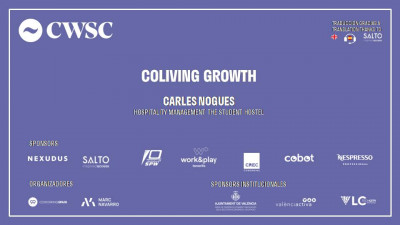
The coworking and coliving industries have been closely related since the beginning of the coliving industry as work is an important part of the early adopters of the coliving industry {as well as living meaningful experiences}.
We have seen how pivoting to a coliving business model have helped coworking in Southeast Asia thrive by increasing the potential revenue per client at least twice by combining: coworking, coliving, food & beverage,...
The Student Hotels tarted this operations in Spain and they are betting hard for an interesting mix of coworking and coliving in cities like Barcelona, and soon, Madrid. ¿How coworking can benefit from a mixed strategy with coliving? ¿What are best workspace to accommodations ratios? ¿Why {and where} to chose this
business model?
Carles Nogues, hospitality managment of TSH will share how a mixed strategy is adding value to clients but more importantly to the business model and the value proposal of the The Student Hotel.
Objectives
Understand the value proposition of TSH and how a business approach like this works in term of revenue and business model.
Key points
- Why coliving + coworking?
- Where a coliving + coworking strategy works best?
- What’s the value proposition of these kind of spaces. Who’s the TSH public?



